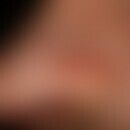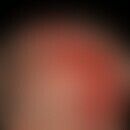Synonym(s)
DefinitionThis section has been translated automatically.
Pathogenetically not clearly clarified disease of the pemphigus group, which was caused by medication.
EtiopathogenesisThis section has been translated automatically.
Various drugs (especially compounds containing sulfhydryl groups such as captopril, D-penicillamine - also penicillins and cephalosporins - or gold compounds) can induce changes that correspond to the different forms of pemphigus. Non-sulfhydryl group-containing drugs such as:
pyrazolone, nifedipine, propanolol, piroxicam, phenobarbital.
In most cases (in about 90% of cases) specific pemphigus AK can be detected. In the absence of AC, acantholysis may be caused by direct reaction of the sulfhydryl groups with disulfide bridges of pemphigus antigens.
You might also be interested in
ClinicThis section has been translated automatically.
Clinically indistinguishable from non-drug pemphigus diseases. Picture of pemphigus vulgaris, pemphigus foliaceus, pemphigus herpetiformis.
Progression/forecastThis section has been translated automatically.
Note(s)This section has been translated automatically.
LiteratureThis section has been translated automatically.
- Ayoub N (2005) Pemphigus and pemphigus-triggering drugs. Ann Dermatol Venereol 132: 595
- Sugita K et al (2004) D-penicillamine-induced pemphigus successfully treated with combination therapy of mizoribine and prednisolone. J Dermatologist Treat 15: 214-217
- Goldberg I et al (2005) Pemphigus vulgaris triggered by glibenclamide and cilazapril. Acta Dermatovenerol Croat 13: 153-155
Tang X et al (2012) Drug-induced pemphigus after six years of treatment withphenytoin
and carbamazepine. Int J Dermatol 51:485-486Yoshimura K et al (2014) Clinical and immunological profiles in 17 Japanese patients
with drug-induced pemphigus studied at Kurume University. Br J Dermatol 171:544-553
Outgoing links (5)
Acantholysis; D-Penicillamine; Pemphigus foliaceus; Pemphigus herpetiformis; Pemphigus vulgaris;Disclaimer
Please ask your physician for a reliable diagnosis. This website is only meant as a reference.




